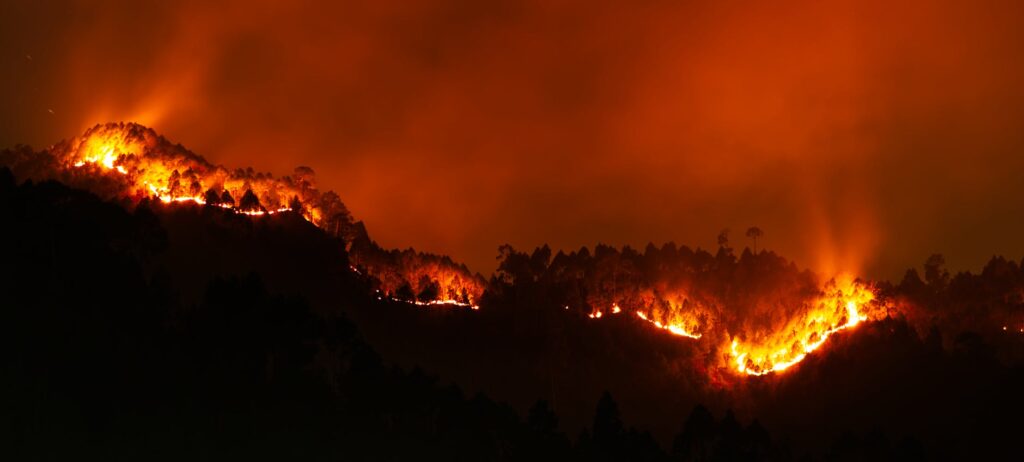Monsoon Havoc in the Himalayas: When the Sky Decides to Fight Back
Let’s Talk About It
You know the Himalayas—those massive, beautiful mountains we call the “Third Pole”? Yeah, they’re not just pretty to look at. They’re basically the life support system for millions of people. Think about it: they control the weather, house crazy amounts of wildlife, and feed rivers that half of South Asia depends on. But here’s the thing—India’s got these two rain patterns, the tropical monsoon and the savanna climate, and they’re like that friend who’s great to hang out with but also kind of a loose cannon. The monsoon? It’s what keeps our farms alive. But when it gets angry—like in Himachal Pradesh last July—it turns into a monster. And climate change? Oh, it’s making everything worse.
1. India’s Rain: The Good, the Bad, and the Ugly
1.1 The Monsoon Giveth and the Monsoon Taketh Away
Seventy percent of India’s rain comes from the monsoon. That’s huge. Up in the Himalayas, it’s what keeps the forests green and the rivers flowing. But here’s the kicker—those same rains can wreck everything in hours. Remember Uttarakhand in 2023? Whole villages just… gone. One minute you’ve got crops, the next you’ve got a river where your field used to be. It’s brutal.
1.2 The Savanna’s Dirty Little Secret
So the savanna regions—they’re supposed to be dry, right? But when they do get rain, it’s like someone turned on a firehose. And that messes with the Himalayas big time. Dry soil can’t soak up water, so when the monsoon hits, it all just slides downhill. Himachal Pradesh in 2025 was a perfect example: a week of scorching heat, then two days of nonstop rain. Bridges? Gone. Houses? Washed away. Just like that.
2. Climate Change Isn’t Coming—It’s Already Here
2.1 Hotter Air, Crazier Rains
Here’s the science part: warmer air holds more water. So when it rains, it’s not a drizzle—it’s a deluge. The Indian Meteorological Department says rainfall in Uttarakhand has gotten 15% heavier since 2000. And the glaciers? They’re melting faster, which means even more water gushing down. The Yamuna’s little rivers are overflowing way more often than they used to. It’s a mess.
2.2 Himachal Pradesh 2025: A Disaster We Saw Coming
Let’s talk numbers. Over 200 dead. Fifteen hundred homes destroyed. Highways turned into mudslides. There was this one hotel in Kullu—just collapsed, killed 12 people. Survivors said it was like the mountain itself was coming down on them. And the cost? Three billion dollars. That’s the entire health budget of the state. Gone.
3. Why the Himalayas Can’t Catch a Break
3.1 We’re Cutting Down the Wrong Trees
Forests are nature’s sponges. But Himachal’s lost 15% of its forests since 2010. And what do we replace them with? Hotels. Resorts. Concrete. So when the rain comes, there’s nothing to soak it up. That fancy resort in Kullu? Built right on the floodplain. Genius move, right?
3.2 We’re Just Not Ready
Here’s the scary part: Uttarakhand had warnings in 2023, but only 60% of the villages got the memo. Rescue teams took three days to reach some places. One official—who didn’t want his name out there—said it best: “We’re using flip phones in the smartphone era.”
4. So What Do We Do About It?
4.1 Stop Fighting Water—Make Room for It
The Dutch figured this out ages ago. Instead of trying to block floods, they design around them. We need that here—no more building on riverbeds, for starters. And stricter rules? Absolutely.
4.2 The Real Heroes? Local Communities
In Uttarakhand, women’s groups are planting vetiver grass to stop landslides. And get this—News18’s workshops have trained 10,000 villagers on disaster prep. Activist Priya Rawat put it perfectly: “We can’t stop the rain, but we don’t have to just sit here and take it.”
Final Thoughts
The Himalayas are stuck in this awful cycle—the same rains that give life can also destroy it. Climate change isn’t some far-off problem; it’s happening right now. Yeah, the world needs to cut emissions, but we can’t wait for that. We’ve got to act locally, and we’ve got to act fast. Because the next disaster isn’t a question of “if”—it’s “when.” And the real question is: will we be ready this time?
Source: Aaj Tak – Home

